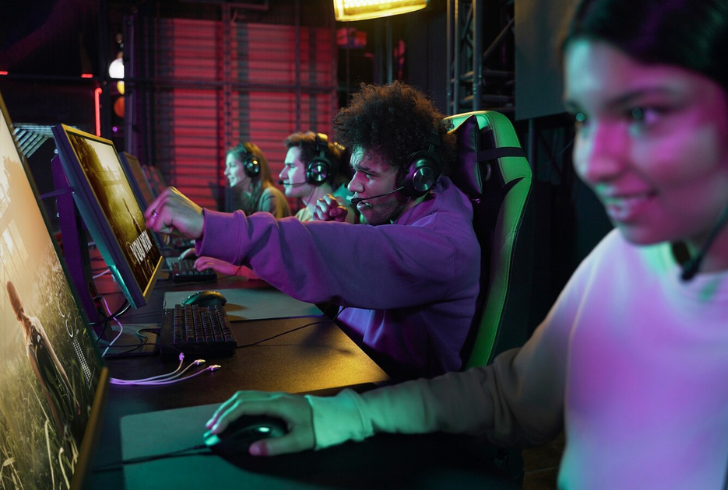The world of gaming isn’t just shifting—it’s evolving at a pace that few other industries can match. While other sectors lean on technology for efficiency, gaming uses it as fuel to reimagine how stories are told, characters are brought to life, and how players experience digital worlds.
With every advancement, whether it’s artificial intelligence, virtual reality, or cloud gaming, the possibilities are being redrawn. For players and developers alike, it’s not just about keeping up—it’s about pushing what’s possible.
Gaming Meets Innovation
Gaming stands at a rare intersection where creativity and technology collide. It’s one of the few spaces where a new algorithm or physics engine doesn’t just improve performance—it completely transforms the end experience.

Freepik | Gaming is a powerful fusion of technological innovation and creative transformation.
Think about the jump from 2D side-scrollers to sprawling open-world 3D adventures, or how online multiplayer redefined social interaction in games. Now, artificial intelligence is beginning to shift the focus once again, not just behind the scenes, but front and center in gameplay.
Unlike traditional industries, where transformation often means automating tasks, gaming uses tech to reshape storytelling and immersion. A new rendering engine isn’t a back-end tweak—it’s something players feel the moment they launch the game. Ray tracing, smarter NPCs, and adaptive gameplay powered by AI are redefining what gamers expect and what developers can build.
The Challenge Behind the Curtain
Incorporating new tools into game development isn’t as simple as hitting update. Every innovation comes with a learning curve, especially when creative professionals are already deeply fluent in existing systems.
Introducing a new engine or animation tool often means pausing production to get up to speed. While the long-term payoff is significant—more efficiency, more power, more creative freedom—there’s always risk in disrupting a flow that works.
Studios have to walk a fine line. Pushing boundaries without tripping over them. Developers are artists as much as technicians, and when the tools they rely on suddenly change, there’s understandable hesitation. It’s essential to make technology work for creativity, not against it. The most advanced engine in the world is useless if it slows down vision or breaks immersion.
Tech That Supports, Not Replaces, Creativity
AI and automation tools are enhancing creativity, not replacing it. Features like procedural generation help designers build vast worlds faster, but these tools still need a creative mind to steer them. The same goes for AI-driven NPCs—yes, they respond more naturally, but it’s human creativity that sets their personality and behavior.
Cloud gaming is another game-changer. By removing hardware constraints, developers can focus more on what the game should feel like rather than how it performs on older consoles. It opens the door for indie studios to create experiences that would have required massive teams and budgets just a few years ago.
Game streaming also breaks down accessibility barriers. Now, players don’t need a high-end PC or console to enjoy high-quality gameplay. That shift gives developers room to focus purely on the experience.
What Gaming Might Look Like in 2030

Freepik | Cloud gaming is the next big shift, enabling seamless gameplay of demanding titles across all devices.
Technology isn’t slowing down, and neither is gaming. Over the next few years, players can expect experiences that feel closer to reality than ever before. Think AI-powered stories that respond to your choices in real time or NPCs that evolve based on your actions. These aren’t just ideas—they’re already being prototyped.
Just like how streaming services changed how people listen to music and watch movies, cloud gaming is poised to change how people play. It’s not a far-off dream anymore. Soon, players could stream games like “Red Dead Redemption 2” or “Cyberpunk 2077” on any device without compromising quality.
Still, one thing won’t change—games are made to move people. Stories, emotions, challenge, and surprise are what players remember. That comes from people, not machines.
The Core of Great Gaming Will Always Be Human
Even with the most advanced tools, the heart of gaming remains the same. The goal is to create meaningful experiences, not just polished ones. Technology makes development faster, smarter, and more flexible—but it’s the human touch that turns code into something unforgettable.
The real challenge for the industry isn’t chasing every new tech trend. It’s knowing how to use innovation to support storytelling, not distract from it. Because the best games aren’t just technically impressive—they’re the ones players remember, long after the credits roll.




